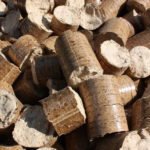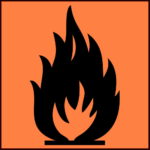Fire-fighting is essential for the maritime industry given the potentially devastating impact on ships and the environment. A small selection of reports shows that the industry is continuously working on solutions
ABS
As vessels and stack heights continue to grow, the task of container deck firefighting is becoming even[ds_preview] more challenging. Classification society American Bureau of Shipping is publishing its Guide for Fire-Fighting Systems for On-Deck Cargo Areas of Container Carriers (FOC Guide). »By applying this enhanced standard, containership owners and operators can take advantage of a clearly defined system of fire-fighting resources dedicated to cargo deck protection«, ABS said. This optional, enhanced criterion builds on the International Maritime Organization’s (IMO) Safety of Life at Sea (SOLAS) regulations and is said to lead to better preparation for potential incidents that threaten the safety of the ship, crew and cargo. »To demonstrate capabilities in excess of IMO requirements and to help owners navigate risks based on the unique characteristics of container fires, ABS has developed four optional notations«, it was announced recently:
FOC (Fire-fighting On-deck Container)
FOC-R (Fire-fighting On-deck Container – Restricted)
FOC+ (Fire-fighting On-deck Container Plus)
FOC-R+ (Fire-fighting On-deck Container – Restricted Plus)
The FOC notation provides a comprehensive approach to assessing the fire-fighting system pressure and capacity, and recognizes enhanced container deck firefighting capability beyond what is required by the IMO.
The FOC Guide supports enhanced fire-main piping arrangements and increased water supply by outlining requirements for additional equipment and arrangements that improve the vessel’s fire-fighting capability. The FOC-R notation has similar requirements to the FOC notation, but with modified water capacity criteria making its application practical for container carriers constructed either before January 1, 2016, (designed to carry any number of container tiers on deck) or built after January 1, 2016, (designed to carry four or less tiers of containers on-deck) and that provide on-deck fire-fighting arrangements that exceed the SOLAS requirements ap plicable to those vessels. The FOC+ and FOC-R+ notations invoke additional requirements addressing the protection of the hatch covers.
Kongsberg
Kongsberg Digital has unveiled a new simulator solution for training officers and crew in advanced fire-fighting. Providing vital education for preparedness in accordance with the STCW Code requirements, K-Sim Safety offers high fidelity simulation covering all aspects of fire safety. »K-Sim Safety contributes to reducing the impact of fire on board as well as planning strategies and tactics to control fire in various parts of the ship, enabling a safer and more effective response to incidents when they occur«, Kongsberg announced.
K-Sim Safety is said to deliver practical exercises simulated in a realistic environment and meets the STCW regulation. The product is based on a detailed 3D representation of a 152,000 dwt double hull Suez Max crude oil carrier with 7 decks. Integration with engine and cargo simulators, as well as K-Sim Navigation offers the possibility for crew resource training where actions on one simulator will directly affect others. »This approach engenders more focus on clear communication between different roles on board,« it was said.
K-Sim Safety includes two separate fire team muster stations with a detailed 3D virtual hotel & machinery space application, visualised in an interactive 3D walk-through animation of the entire engine room and four upper decks.
Skuld
In a recently published blog article, marine insurer Skuld addresses the topic of wood pellets and the risk of fire. In recent years a number of formerly coal fired power stations have started to turn to biomass as feedstock in order to improve sustainability of fuel sources.
This has resulted in worldwide shipments of wood pellets intended to be burned. »The crucial factor is the availability of oxygen,« it is said, adding that it is generally advisable to carry wood pellets without applying any ventilation. This means that any tendency towards self-heating, and the consequences of that including carbon monoxide evolution and oxygen depletion, is self-limiting. Although the IMSBC Code does not refer to the need to take gas measurements of the holds during carriage, Skuld recommends that records are kept of oxygen, carbon monoxide and flammable gas levels during a voyage in a similar fashion to the records kept when carrying coal cargoes. »We also recommend that cargo temperatures are taken if possible, using sounding pipes. These unfortunately provide limited useful information on the temperatures elsewhere in a hold«, it is said. When carrying wood pellets without ventilation there may be a risk of condensation wetting on the surfaces of the cargo stowages especially if the vessel is to be discharging in low ambient temperatures. This can be unavoidable depending on the climatic conditions.
In the event of a smoke evolution, levels of carbon monoxide increasing above 100 pm, or high temperatures experienced during carriage of wood pellets, all holds should be immediately sealed if not already and not opened until discharge is imminent. According to the experts, it is however important to note that evolution of high levels of carbon monoxide is not necessarily an indication of a problem. As set out in the IMSBC Code, any enclosed spaces on the vessel’s deck or in the accommodation which are immediately adjacent to a hold containing wood pellets should be periodically checked for the presence of carbon monoxide and low oxygen levels.




















